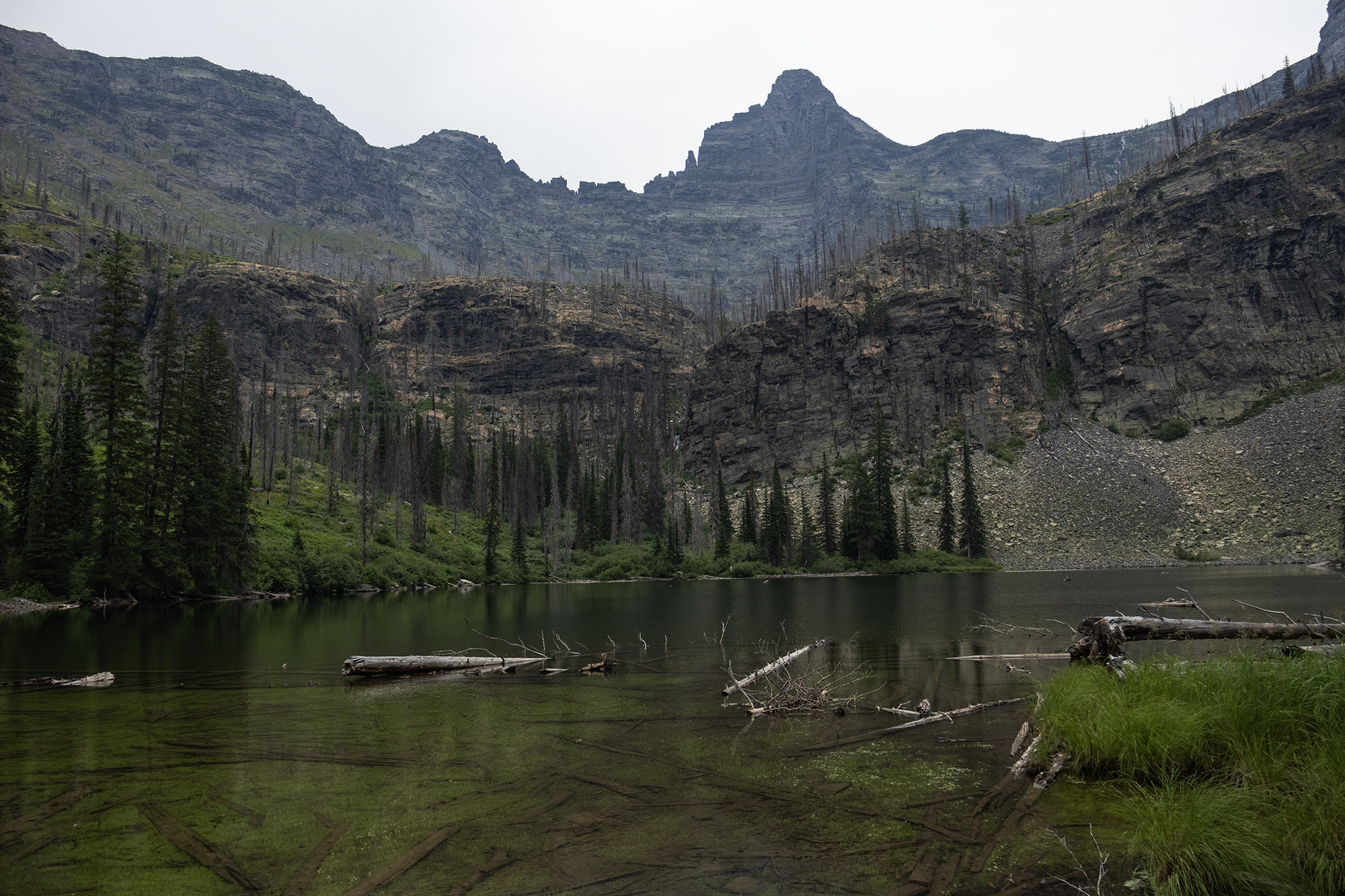Your cart is currently empty!

Snyder Lakes 2024
—
by
Tucked amongst towering walls lies a pair of lovely lakes. While no trail reaches the upper lake, the 4.5 mile trail from Lake McDonald Lodge takes you to the lower of Snyder Lakes. First through the lovely cedar hemlock forest, then through the burned area with birds and flowers galore.
On a predominantly overcast day, I stepped foot onto the Sperry Trail with my destination being Snyder Lakes. It’d been over ten years since I last visited the lake and much has changed. First of all, when I’d hike it the first time, it was earlier in the year with snow near the lake. Second of all, a fire had burned through the upper stretches of the hike changing the forest and opening the trail up to views.
With the recent rain, the trail was muggy. Thankfully, the sun was keeping the temperatures down. I have a love/hate relationship with the Sperry Trail. I love the open cedar/hemlock inland rainforest as it is so beautiful. It is, however, a fairly steep trail and used extensively by pack trains heading up to the chalet. It becomes a dusty, smelly grind up through the trees.
After about a mile, an overlook to the chattering, but invisible, Snyder Creek below also gives you views out to Lake McDonald. Not long after, I entered into the burn from 2017. Fireweed, Missouri Goldenrod, and Pearly Everlasting were the late summer flowers showing off while huckleberries were sprinkled in the mix. The trail leveled out and I passed the trail for the lookout before coming to the junction for the Snyder Lakes Trail.
Snyder Creek continues to splash down below with the occasional peek at it. Huckleberries and serviceberries were plentiful as I turned up the drainage. When last hiking the trail, the dense forest obscured the rugged mountain walls surrounding the valley, but post fire, the jagged ridgelines were a delight.
While the forests themselves are not particularly lovely (a stand of burned trees are not all that appealing compared to their green counterparts), the vegetation that springs up after a fire is an explosion of color. Insects and birds also have a heyday which was evidenced as I worked my way up. MacGillivray’s Warblers, Western Tanagers, Yellow-rumped Warblers, Swainson’s Thrushes, and Olive-sided Flycatchers chirped, warbled, pipped as they fed on insects and berries. The trees might have been dead, but the forest was alive!
A lot of spring rain has led to an insane amount of growth for plants and shrubs and much of the trail was crowded with grasses and thimbleberry bushes. Thunder rumbled in the distance and an occasional light drizzle came down, but nothing that made me need to stop and get my jacket on.
American Pikas love a boulder field of a certain size (called talus) and a sweet talus field crosses the trail. I heard pikas eeeeping and saw a couple glimpses of them. Further up the trail, it reaches its apex. A panorama extends in all directions with Mt Edwards and Little Matterhorn are clearly visible. A waterfall tumbles down from in-between them to the hidden Upper Snyder Lake. Another cascade (not visible from here) crashes into the lower Snyder Lake.
I followed the trail down and across Snyder Creek and out onto the log jam at the foot of the lake. Small trout were visible, swimming over the green vegetation lining the lakebed. I returned to the trail and followed it out towards the head of the lake. I had watched a Golden Eagle flying around earlier and knew of a nest… and actually spied it from the previously mentioned high point (but it appeared unoccupied). I heard some noise above me and saw an adult fly out, then a chick flapping its wings! Sweet!
After a bit of enjoying the lake, I turned around and headed back. Hungry, I stopped on a large rock at the high point. I heard a grouse making some noise and a Dusky Grouse chick popped out of the undergrowth. Moments later, I saw the female. I finished my lunch and worked my way back out, spooking a Mule Deer and her fawn. So much life after so much destruction.




Leave a Reply